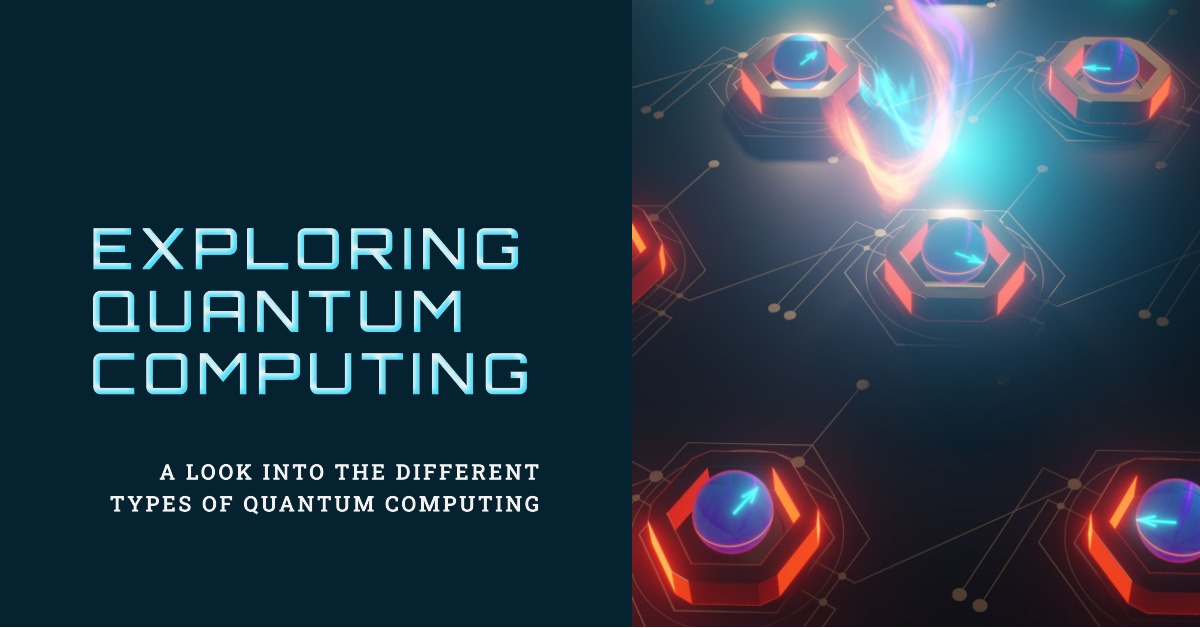Introduction
Various facets of computing and problem-solving are expected to undergo a transformation thanks to the intriguing and quickly developing field of quantum computing. Unlike classical computers that utilize binary digits, or bits, to represent information, quantum computers employ quantum bits, or qubits, which can exist in multiple states simultaneously. This fundamental distinction gives rise to various types of quantum computing models, each with its own unique characteristics and potential applications. In this article, we will delve into three prominent types of quantum computing: gate-based quantum computing, adiabatic quantum computing, and topological quantum computing. In this article you more learn about quantum computing. A technical web blog is a platform that gives technical specialists and enthusiasts the chance to share their expertise, experience, and insights with a larger audience on numerous Best Technology Blogs.
Gate-Based Quantum Computing
Gate-based quantum computing is the most well-known and widely studied approach to quantum computation. It relies on quantum gates to manipulate the state of qubits and perform operations on quantum information. Quantum gates are analogous to logic gates in classical computing and are used to create quantum circuits that execute complex computations. Gate-based quantum computers typically employ superconducting qubits, trapped ion qubits, or other physical systems to implement quantum gates.
One of the most famous quantum algorithms, Shor’s algorithm, which can efficiently factor large numbers, relies on gate-based quantum computing. However, gate-based quantum computers face significant challenges, such as decoherence and error correction. Researchers are actively working on developing fault-tolerant quantum gates and error-correcting codes to overcome these obstacles and build scalable gate-based quantum computers.
Also Read – Top 10 IT Consulting Companies in NYC, USA
Adiabatic Quantum Computing
Adiabatic quantum computing (AQC) takes a different approach to solving computational problems. It utilizes the adiabatic theorem from quantum mechanics, which states that a quantum system remains in its ground state if changes are applied slowly enough. AQC devices start in a simple initial state and slowly evolve into a final state representing the solution to a computational problem.
AQC is particularly suited for optimization problems, such as the traveling salesman problem or portfolio optimization. It has been proposed as a potential solution to tackle complex optimization challenges that classical computers struggle with. D-Wave Systems, a prominent quantum computing company, has developed adiabatic quantum computers based on superconducting qubits and has made significant strides in solving optimization problems.
Topological Quantum Computing
Topological quantum computing (TQC) is a fascinating and relatively new paradigm in the field of quantum computing. TQC relies on topological properties of qubits to store and manipulate quantum information, which provides inherent resilience against certain types of errors.
Topological qubits are more stable and less susceptible to decoherence, making them potentially advantageous for building fault-tolerant quantum computers. Majorana zero modes, anyons, and braiding operations are some of the key concepts and building blocks in TQC.
Microsoft’s Station Q, in collaboration with several academic institutions, is actively researching topological quantum computing using a platform based on a particular type of particle called a Majorana fermion. TQC holds great promise for quantum error correction and the development of robust and scalable quantum computers.
Quantum Annealing
Quantum annealing is a specialized form of adiabatic quantum computing. It focuses on using quantum tunnelling and quantum fluctuations to solve optimisation challenges. Quantum annealing devices, such as those developed by D-Wave Systems, are designed to find low-energy states, or the “optimal” solution, by starting with a high-energy state and gradually cooling the system to reach the ground state.
Photonic Quantum Computing
Photonic quantum computing employs photons (particles of light) as qubits. Quantum information is encoded in the properties of photons, such as polarization or phase. Photons can be manipulated using various components, including beam splitters, wave plates, and detectors, to perform quantum operations. Photonic quantum computing holds promise for high-speed communication and quantum cryptography due to the ability of photons to travel long distances without significant loss.
Conclusion
These are just a few examples of the different types of quantum computing being explored. Researchers and companies are actively investigating various technologies and architectures to overcome the challenges of building practical and scalable quantum computers. The field is rapidly evolving, and new approaches may emerge in the future as our understanding of quantum mechanics deepens and technological advancements continue to be made.
Quantum computing is a vibrant and diverse field, encompassing various approaches and technologies. Gate-based quantum computing, adiabatic quantum computing, and topological quantum computing are just a few examples of the types of quantum computing being explored today. Each type has its strengths and challenges, and researchers are actively working towards overcoming the limitations to unlock the full potential of quantum computers.
While gate-based quantum computing remains the most prominent and well-studied type, adiabatic and topological quantum computing offer unique advantages in solving specific types of problems and achieving fault tolerance. As the field progresses, it is likely that a combination of these approaches, along with other emerging models, will contribute to the future




